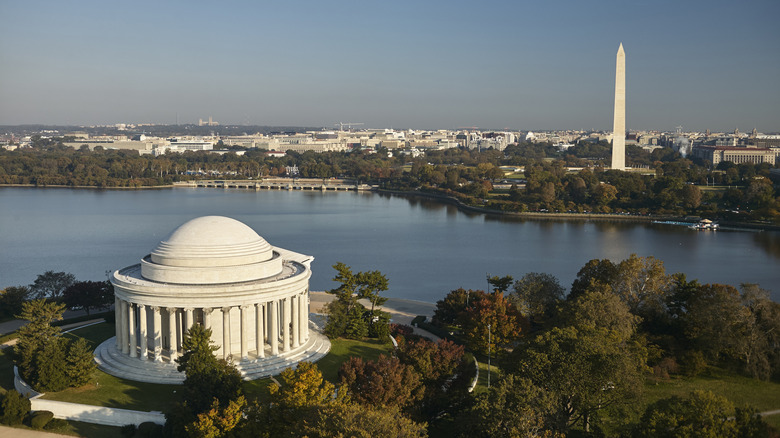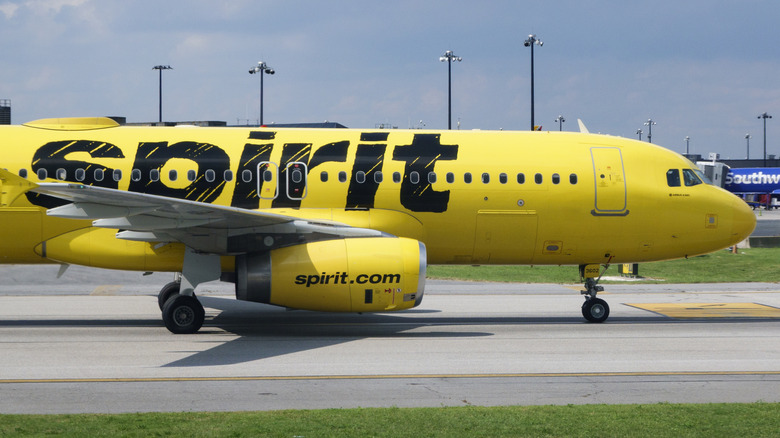
When planning a trip to Washington, D.C., your flight options typically narrow down to three airports: Ronald Reagan Washington National (DCA) in Arlington, Baltimore/Washington International (BWI), and Washington Dulles International (IAD) in Fairfax. While Dulles may offer the most international routes, travelers looking to save money and time often find DCA or BWI more budget-friendly.
Let's start with the fares. BWI is a hub for low-cost carriers like Southwest, Spirit, and Frontier, which regularly
push ticket prices down. Spirit, which Business Insider ranked as the best U.S. airline in 2025, doesn't even operate at the other two airports, and regularly offers ultra-low-cost deals to dozens of U.S. cities — making BWI unbeatable for domestic budget travel. However, keep in mind BWI is the busiest out of these three options, so TSA wait times can be longer.
On the other hand, DCA is limited to shorter routes given its status as a "high‑density" (or high‑traffic) airport, which means it is subject to strict federal slot controls — a rule it shares with just a few other highly congested U.S. airports (like JFK and LaGuardia). According to FAA regulations, DCA is capped at 60 Instrument Flight Rules (IFR) operations per hour from 6 a.m. to midnight, divided among air carriers, regional airlines, and general aviation. In contrast, IAD (Dulles) and BWI do not have these limitations. That's why DCA offers fewer budget‑carrier flights and why legacy airlines dominate: Securing slots there is very limited and expensive.
Read more: The 5 Best Airlines That Fly To Hawaii, According To Reviews
Ground Transportation To And From D.C. Airports

Beyond the base fare, ground transportation can significantly affect your total cost. DCA wins hands-down on accessibility. It's located around 15 minutes away by car from downtown, and connected directly to the Metro's Blue line. Meanwhile, to get to BWI, you'll need to manage your time wisely. First, arrive in Union Station by car or Metro (Red line). From there, catch an Amtrak or MARC train to BWI, which will take you around 40 minutes to get there. Once you get to the BWI station, you'll need to catch a free shuttle (which runs every 10-15 minutes) from the train station to the airport itself.
In the end, depending on how far from Union Station you're staying, the whole trip to and from BWI can take around two hours. However, both Amtrak and MARC trains shut down from 1 a.m. to 5 a.m. every day. So, if you land before 5 a.m., you'll have to wait until dawn to get to D.C. by train — or you'll have to book an Uber or Lyft for a 40-mile ride, which usually cost around $100.
Dulles has a similar issue. You can get to and from the airport on the Metro (Silver line) in about 90 minutes from central D.C. for around $6. However, the Metro operates until midnight (or 1 a.m. on Saturday). All of which goes to say that, if you're arriving or leaving D.C. in the middle of the night, the cheapest option for transportation will be DCA, as its proximity means rideshare options are significantly cheaper.
Ready to discover more hidden gems and expert travel tips? Subscribe to our free newsletter for access to the world's best-kept travel secrets.
Read the original article on Islands.















